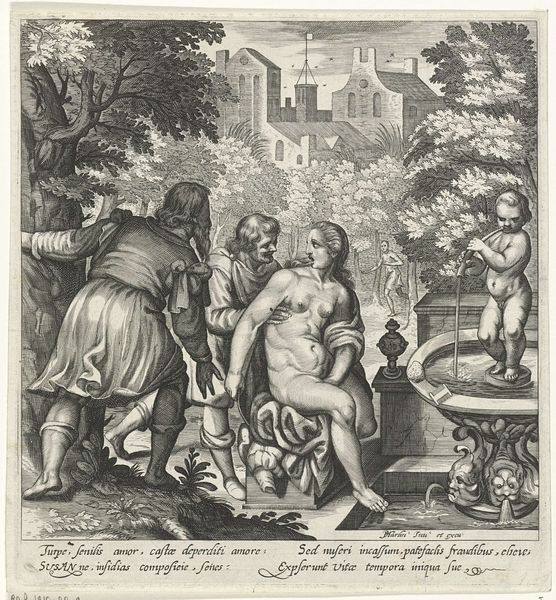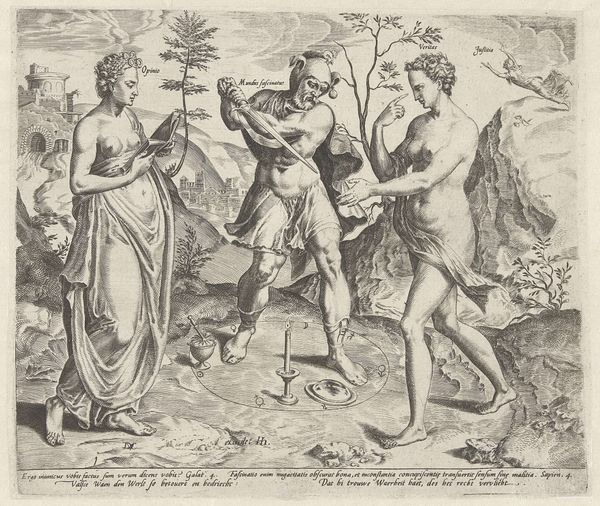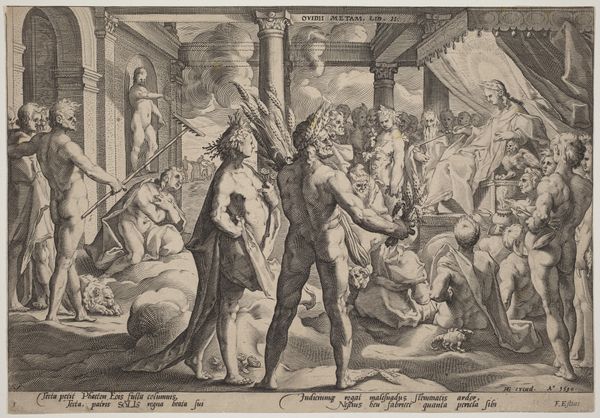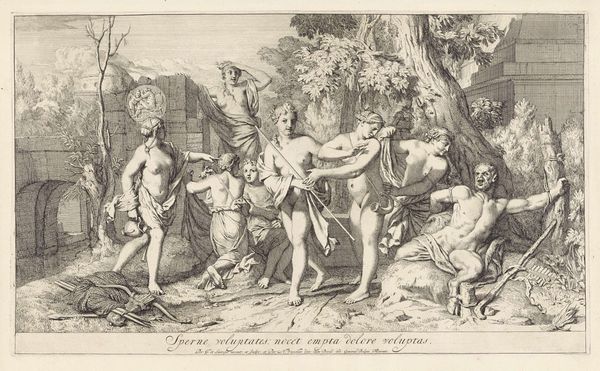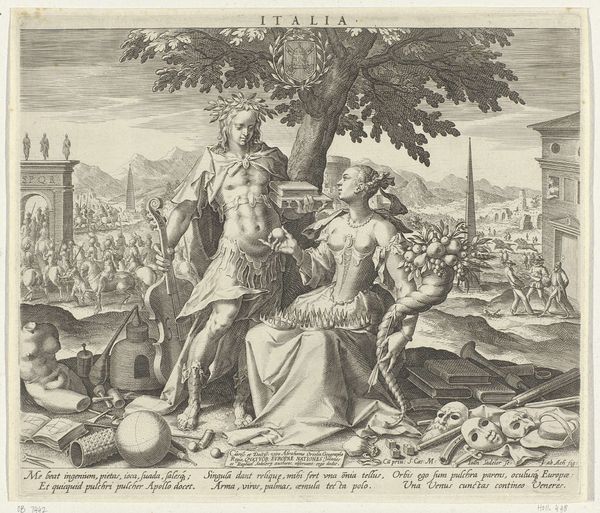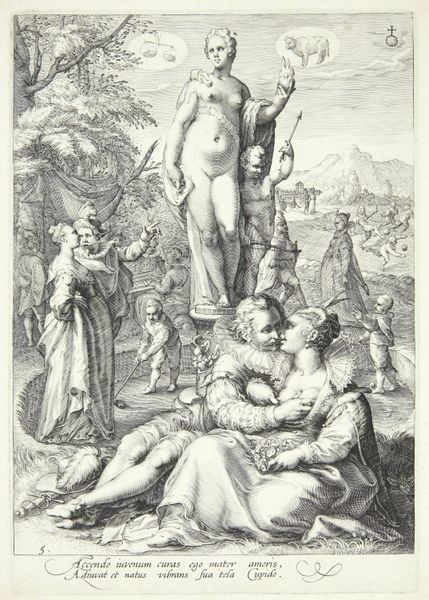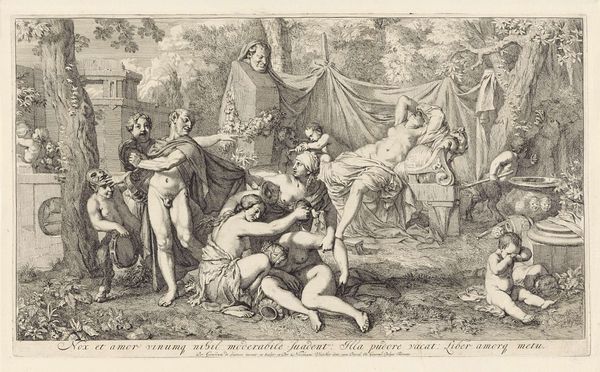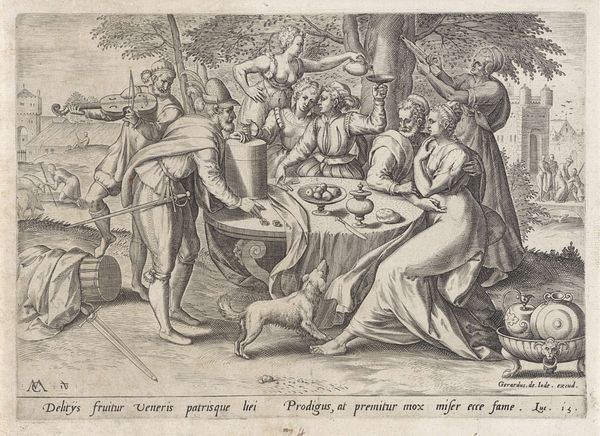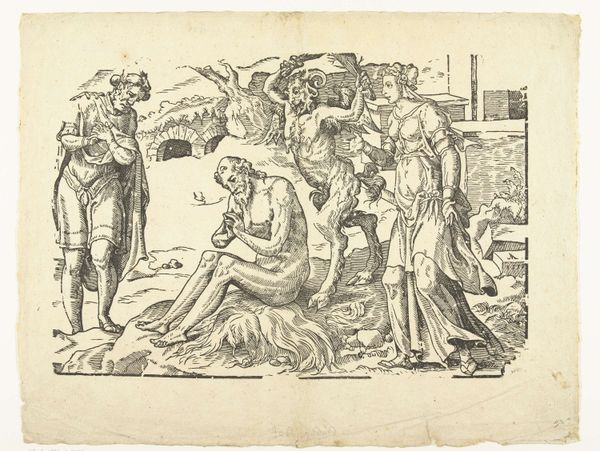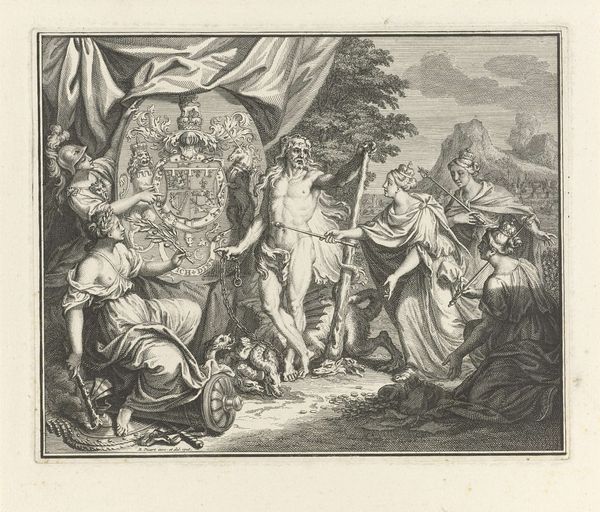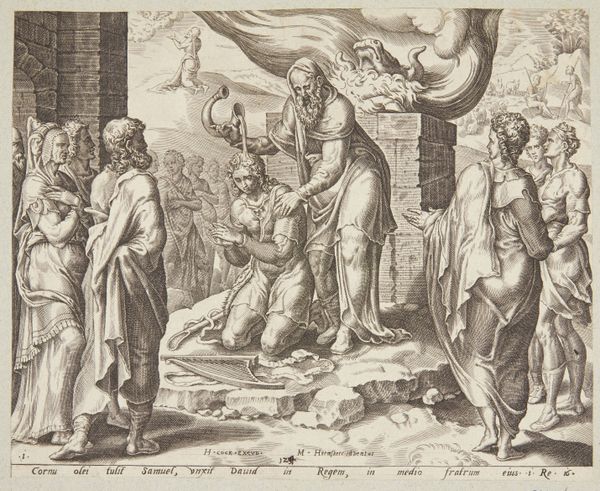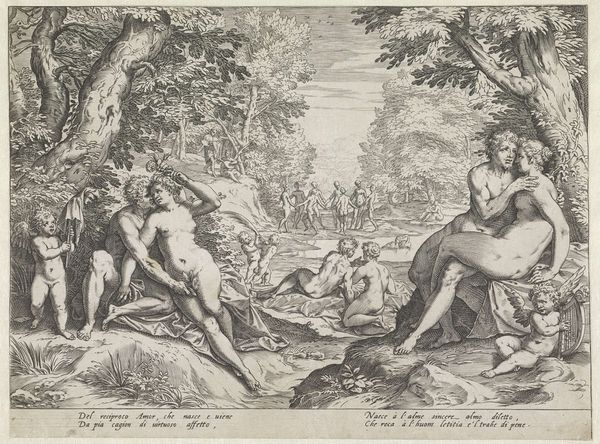
print, engraving
#
baroque
# print
#
old engraving style
#
figuration
#
history-painting
#
nude
#
engraving
Dimensions: height 220 mm, width 220 mm
Copyright: Rijks Museum: Open Domain
Curator: Looking at this intriguing piece titled "Man voedt de liefde met wijn en brood," translated as "Man feeds love with wine and bread," an engraving crafted sometime between 1581 and 1656, attributed to Nicolaes de Bruyn and housed in the Rijksmuseum... My immediate reaction is that the composition feels incredibly staged, almost theatrical. The figures are sharply defined, their poses rather stiff. What do you make of it? Editor: The visual structure creates an almost allegorical effect, I see the overt displays of nudity and indulgence against this sharply rendered yet somewhat static backdrop. It draws my attention immediately. Consider how the lines, meticulously etched, define every muscle and fold of fabric. The light and shadow are deployed to create distinct planes, pushing certain elements forward. Notice how Bacchus seems to overflow off of his barrel of wine. The cornucopia overflows! Curator: And what about the characters populating this scene? We have a somewhat fleshy Bacchus with the God of Love looming on one side while, one assumes, Mother Ceres arrives to oversee everything on the other, the namesake actors who provide the indulgence to be seen. The tension in those oppositions feels really key. Editor: The characters' relation is complex and creates balance. Structurally, this push and pull creates movement across the surface, leading the eye from the almost corpulent Bacchus and towards the slightly less solid figure of Ceres. Furthermore, there’s this Latin inscription; can we discern what purpose they serve? Curator: Absolutely. They’re moralizing verses essentially warning against the excesses represented in the image. “With Ceres and Bacchus who can abstain.” The work acts as both visual spectacle and moral instruction. We see not merely pleasure, but a warning. Editor: A compelling argument! The placement of those texts below each groupings feels intended. One last thing, this image is defined in an age by wealth. Perhaps there is a critique here of opulent tastes… A condemnation, not only an enjoyment. Curator: It’s possible. Regardless, the success in Nicolaes de Bruyn is how those threads are pulled across materiality. How it can become so conceptually evocative across time. Thank you for bringing a modern perspective that brings the material elements into focus. Editor: Likewise; considering its placement within its historical and cultural context allows me a new visual analysis and appreciation for the technical components employed to establish balance in the composition.
Comments
No comments
Be the first to comment and join the conversation on the ultimate creative platform.
